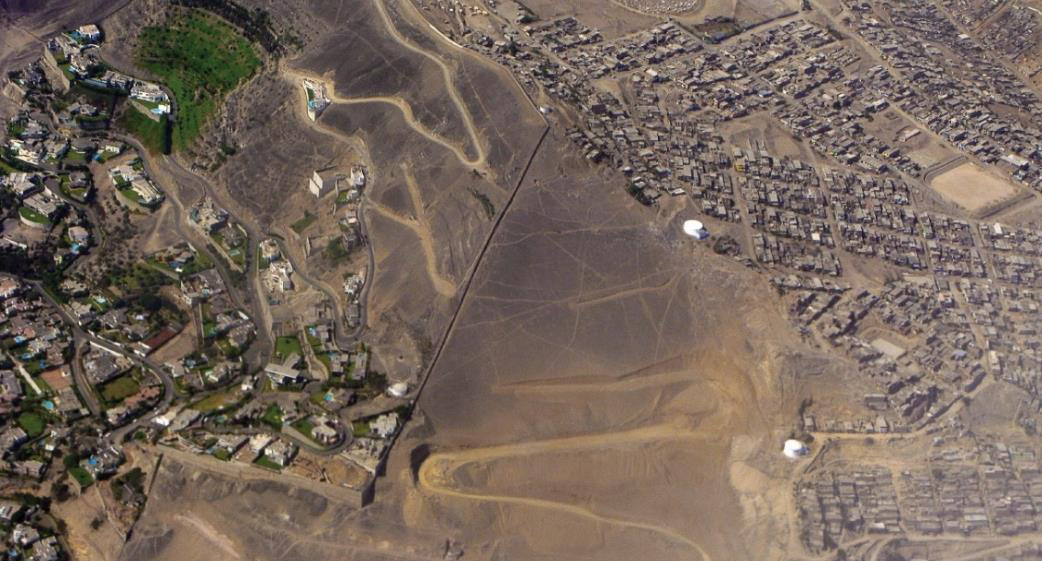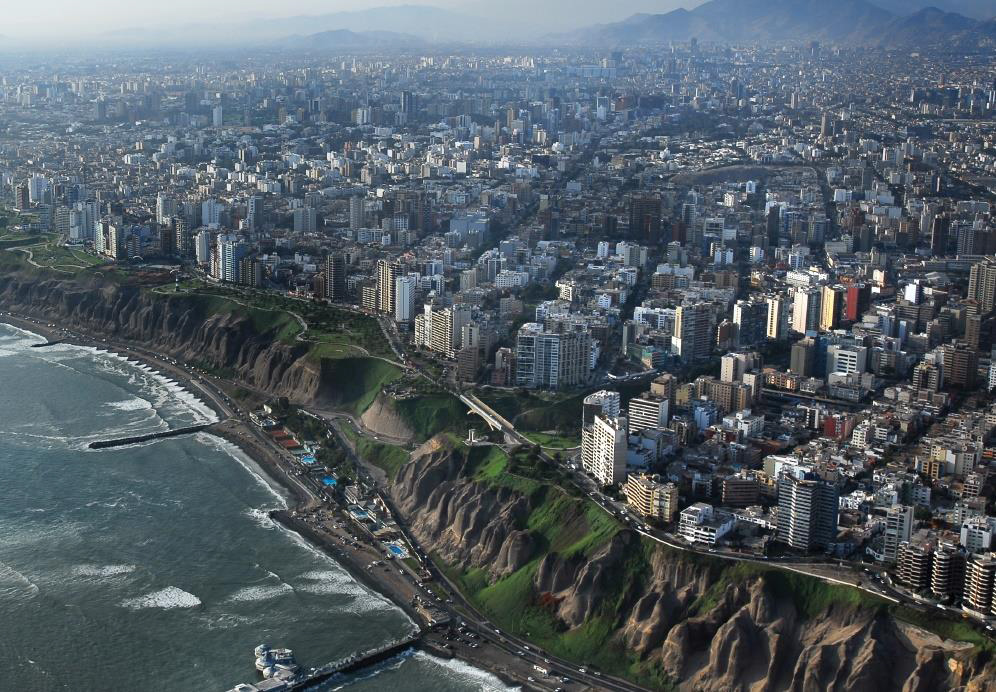Greening the Desert
Greening the desert shows the role of green infrastructure in the mitigation of urban heat islands of the densely built arid environment of Lima, Peru. It shows the relevance of understanding the impact of shade and vegetation on different urban surface covers to achieve this purpose.
Rapid densification, alongside with extremely low rainfall and recurrent heat waves, have led Lima to consider increasing the ratio of green infrastructure as a resilience strategy against climate change. A fully green scenario in the desert, however, may not be feasible without compromising water and energy resources.
A microclimate analysis with ENVI-met was conducted to determine how non-vegetated urban surfaces in combination with lawns, shrubs and trees can contribute to outdoor thermal regulation and the mitigation of urban heat islands within Lima’s typical urban morphology and its highly dense and water scarce context.
The results were used to better inform a ranking of surfaces included in a Biotope Area Factor tool developed for the city. The tool aimed to improve the approach to greening the desert, by introducing a strategic perspective towards vegetation to maximize the delivery of its ecosystem services.
The results showed that trees, regardless of being planted on vegetated surfaces or bare soil (typical surface of the desert), are a very effective cooling resource, compared to other type of vegetation like shrubs or lawns. Trees helped reduce local temperature by approximately 0.5 K, revealing the importance of shading urban surfaces, particularly hard surfaces – which commonly replace greenery due to lack of water.
Researcher
Carol Torres Limache
Research group
Erasmus Mundus Joint Master in Urban Climate and Sustainability (MUrCS)
Glasgow Caledonian University – UK
LAB University of Applied Sciences – Finland
University of Huelva – Spain
Research period
2020
Applied features
ENVI-met holistic microclimate model
Outdoor thermal comfort
Facade & rooftop greening
Impact of green spaces
Nature-based solutions with bodies of water and hard surfaces




